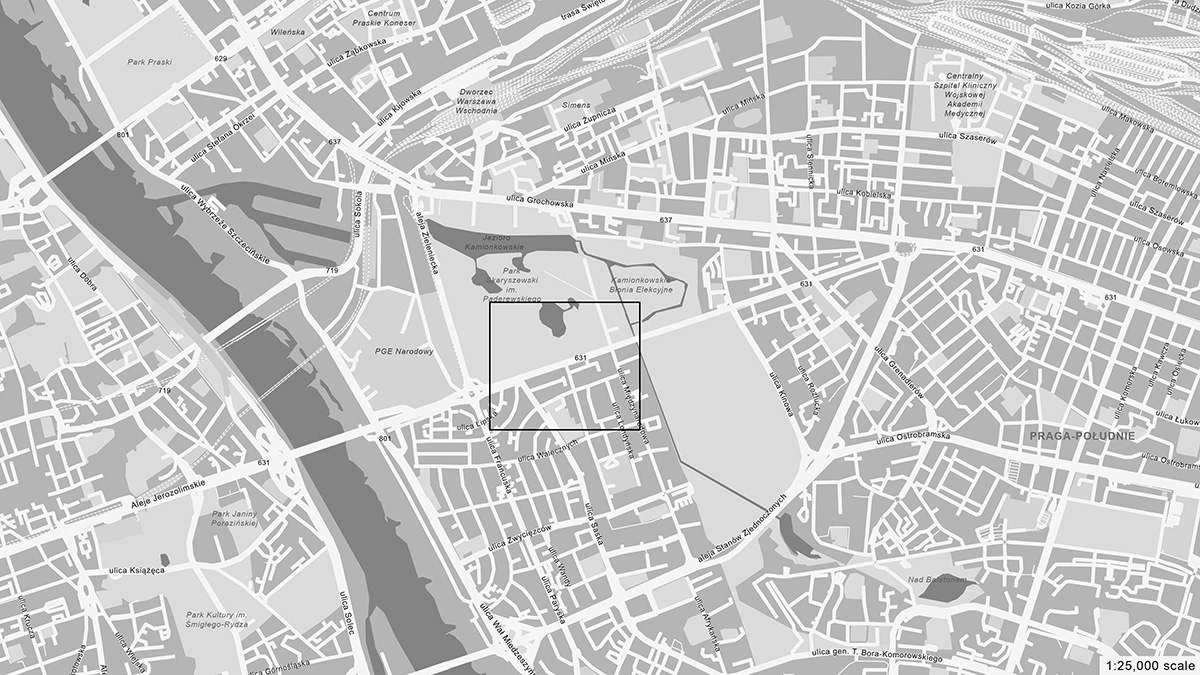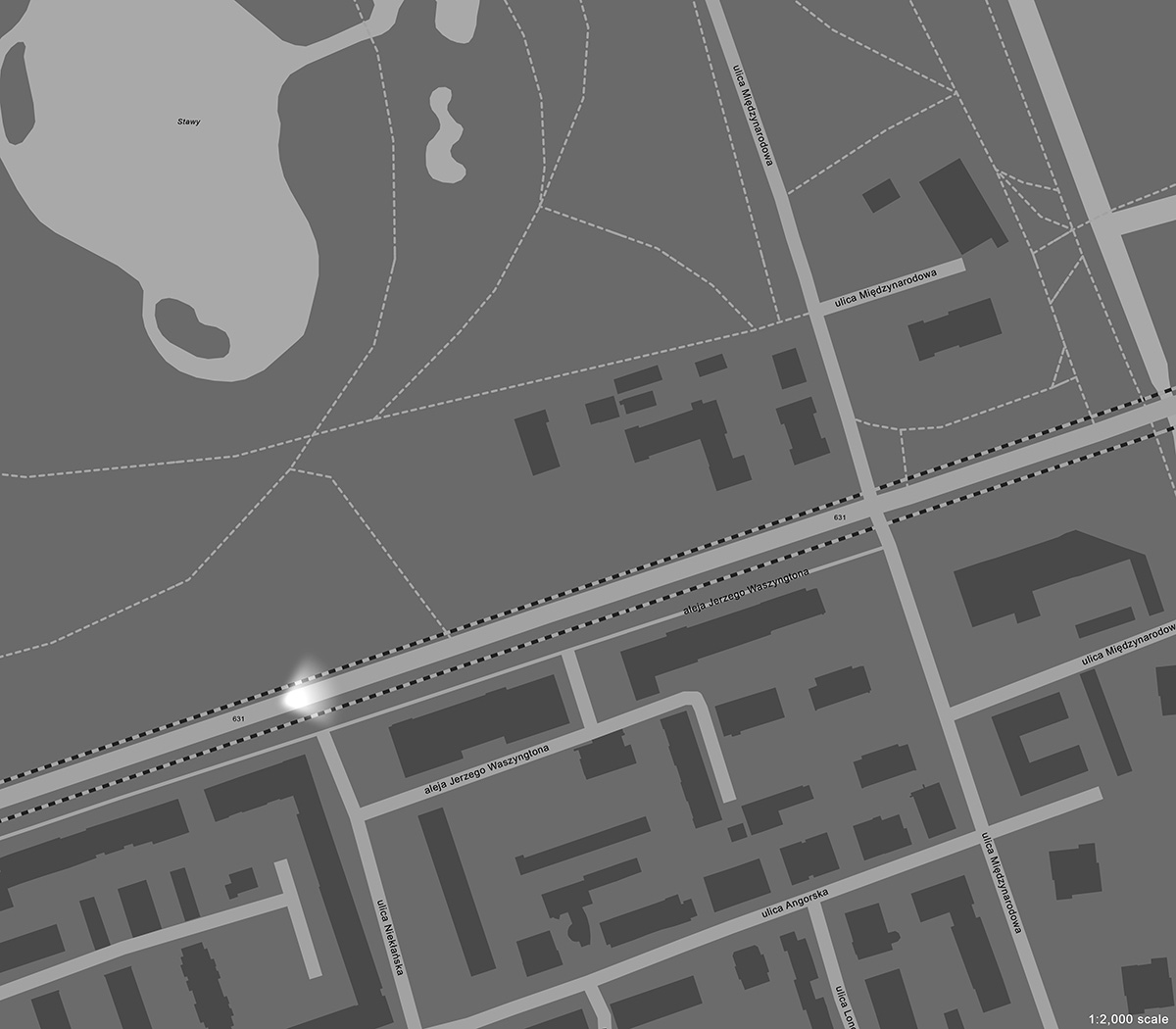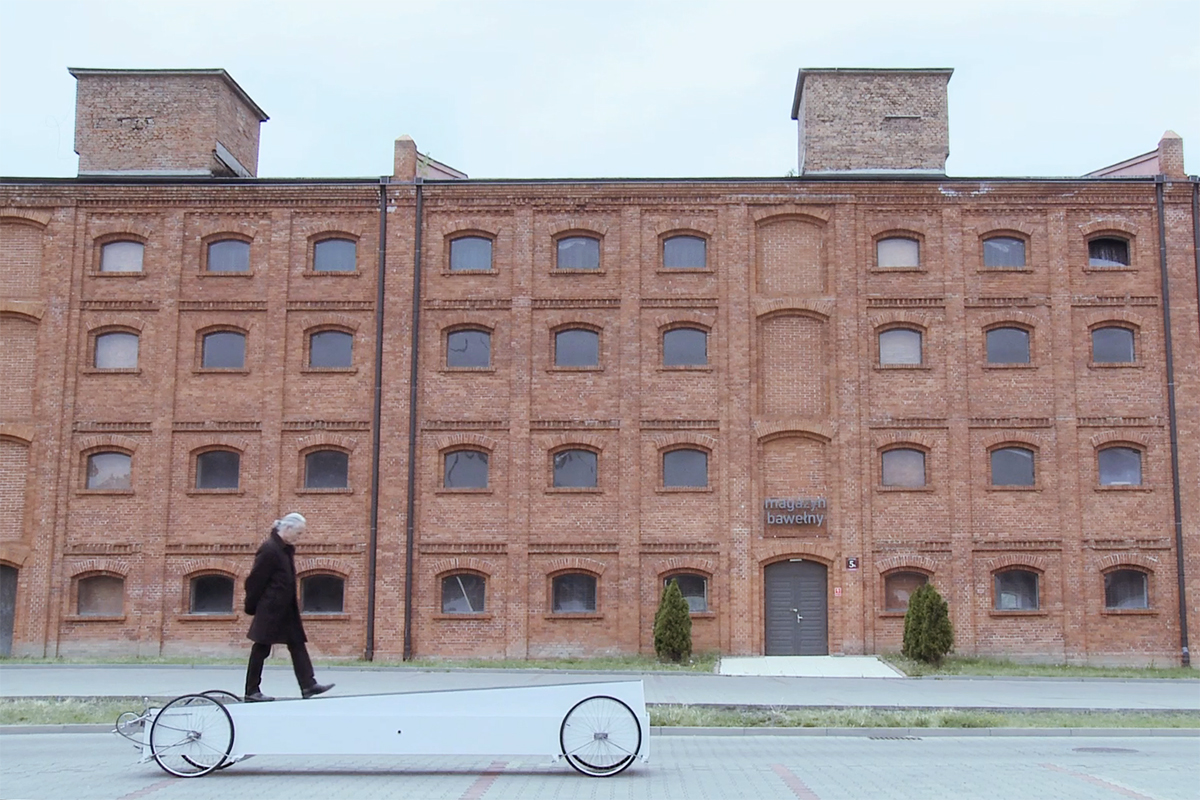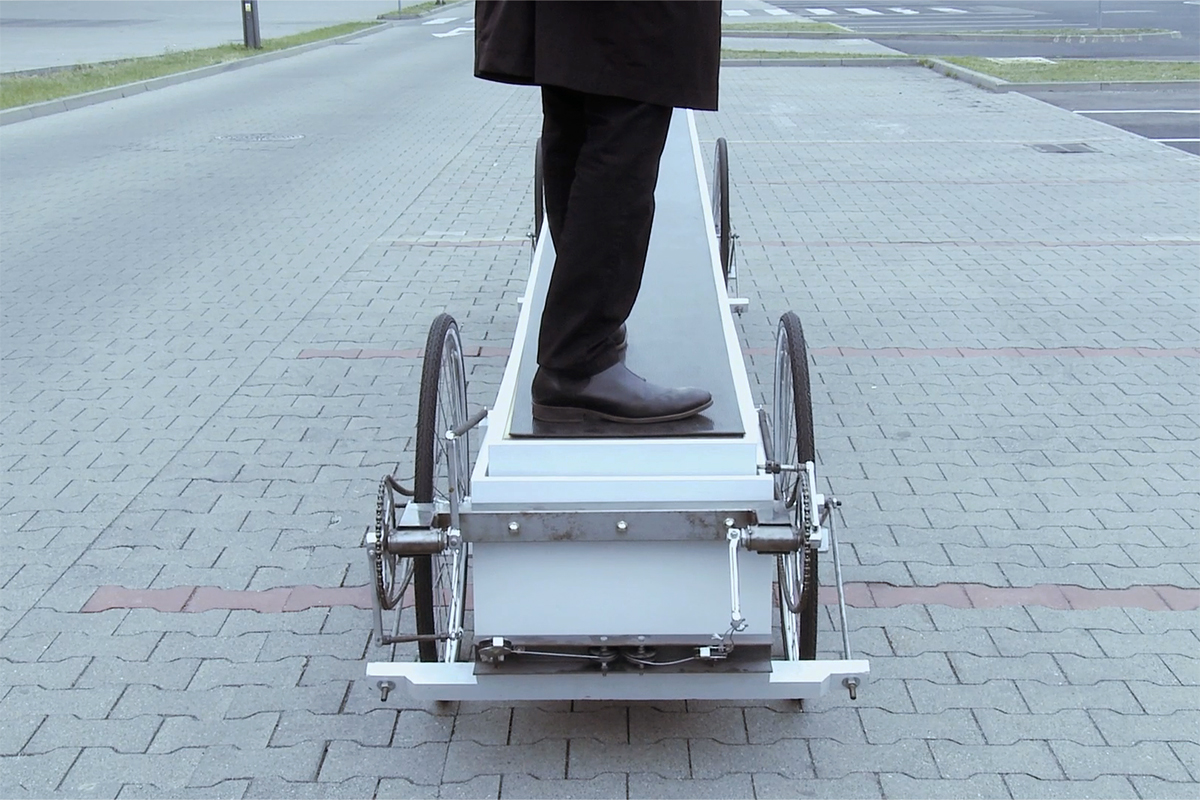Interrogative Design: Selected Works of Krzysztof Wodiczko – Vehicle
For the duration of the Interrogative Design exhibition, we will be providing expanded online content to give viewers a deeper access to selected projects. Materials for this exhibit provided by the artist, with unique edits specially produced for this project by GSD Exhibitions.
Vehicle, 1971, Warsaw, Poland
- Vehicle moves in a uniform motion in a straight line and in one direction only.
- The artist, walking up and down the tilting plat-form, causes a seesaw movement; the energy thus generated is transmitted by a system of cables and gears to the wheels which, as a consequence, move the vehicle forward.
- Vehicle is the exclusive use of the artist.
These points were written by Wodiczko in 1971 to define the rules of the Vehicle, its user, and, combined, the capacity captured between the human and the machine. He designed and built the Vehicle, took it out into the streets of Warsaw, Poland, and, using his own body, moved the Vehicle across that urban environment.
If you follow the rules above without questioning the basis of them, you can move the Vehicle, and, by turning off your critical thinking, you become an object whose weight and counter-weight propels it in one direction only—forward. As you’re standing atop the Vehicle, using your body to propel forward motion, the given length and counterweight system defines the pace, which is exceedingly slow regardless of your efforts.
If you agree to the rules as stated, then you unwittingly agree to subject your life to the consequences of the Vehicle. Once in motion, you realize that in order to survive the Vehicle, you must become a subject and make personal choices to protect your body from harm by stopping the Vehicle, from becoming stuck on a sidewalk, from entering traffic, or from avoiding steep slopes, sets of stairs, and other obstacles. Once you realize the severity of the Vehicle, you begin to understand that this performative act is in the spirit of the theatre of the absurd, an illogical gesture speaking indirectly towards power structures. As Krzysztof himself wrote about the role of the artist in the Vehicle, “You couldn’t just go around thinking too much or too critically; you, the artist, had to function like a poet “creatively” lost in the clouds, for whom there was also allotted a certain amount of room in the machine…. One could say that the subject who operated the vehicle was in fact an object, a part of this machine. And yet there was, in this vehicle, a certain illusion of freedom, moving back and forth and seeing the world independently, in peripatetic fashion.”



